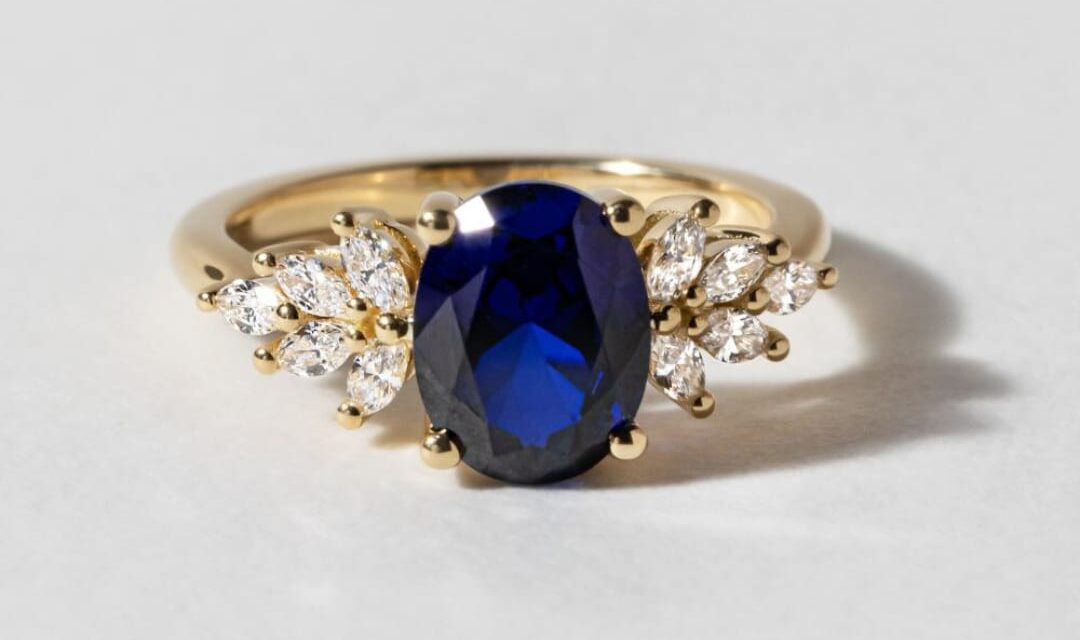Introduction
Ever wondered why blue diamonds are so blinding? Few gemstones are as rare, as precious, or as important to history and the gemstone market. Be a jewelry collector, a diamond collector or a person just interested to learn more about nature’s wonder, in this article you will find all that you need to know about blue diamonds from where they come, where they are available, and how to keep them in great shape.
What Are Blue Diamonds?
Natural diamonds with a distinct blue tint caused by trace amounts of the element boron in their crystal structure, they’re known as blue diamonds. The color is blue and includes a pale sky-blue to deep midnight blue, with the most valuable having high saturation. Unlike other gemstones, blue diamond pink are rated on the basis of quality of worldwide preferred cuts, and carat weight, but color is tantamount.
The Formation of Blue Diamonds
The blue diamonds form deep inside the Earth under high pressure and very high temperatures. A blue diamond can spend billions of years trudging from Earth’s core to its surface. The reason for the blue color is that the boron atoms blend with the structure, which is a rare event. Due to their rarity, blue diamonds are the most valuable gemstones in the world.
Why Are Blue Diamonds Rare?
Boron is not present in all diamonds and even not every diamond with boron has to be blue. Such a combination of factors makes them very rare. Even something like Blue diamonds are rare, and only a few mines around the world dig for them (Cullinan Mine in South Africa being one).
The Colors of Blue Diamonds
The color of a blue diamond can vary significantly, with different shades carrying different names and values:
- Fancy Light Blue: Lightest and softest of a gentle shade.
- Fancy Blue: Notable color, a mid range shade.
- Fancy Intense Blue: A more vibrant, deeper color.
- Fancy Vivid Blue: With an intense, rich blue hue, the rarest and most valuable.
How to Assess Blue Diamonds for Value
There are several important aspects that determine a blue diamond’s value:
- Color Intensity: The most valuable hues come in vivid blues because the colors are richer.
- Clarity: Passage of light in high clarity beautifies and increases value.
- Cut: The sparkle can be maximized by a well cut diamond, as well as its value.
- Carat Weight: The larger diamonds are rarer and valuable.
The market demand, together with these factors determines a blue diamond’s worth.
How to Care for Blue Diamonds
You need to have proper care of a blue diamond if you want to own one. Here are a few essential tips:
- Avoid Harsh Chemicals: They should also not be subject to powerful cleaners because heavy proteins may damage your diamond.
- Regular Cleaning: Warm water and light soap can be used, along with a gentle brush.
- Professional Checkups: Check your diamond periodically to make sure your diamond is set correctly.
Where to Buy Blue Diamonds
Buying a blue diamond comes with a certain amount of careful consideration. In fact, reputable jewelers, known gemstone dealers or well known auction houses are good sources too. For best practices, you should always have your diamond certified, by the Gemological Institute of America (GIA), and other institutes known, to ensure the diamond’s authenticity and the worth of it.
Conclusion
Blue diamonds are also nature’s marvels and are luxury symbols. They are very desirable, breathtakingly pretty, rare, and historically significant. And if you’re investing in blue diamonds, building up a jewelry collection or even simply basking in their beauty, then they’re available, so you can take an unparalleled peep at the jewels of earth. But treat them well, and they are things of great value that will be passed down for generations.





